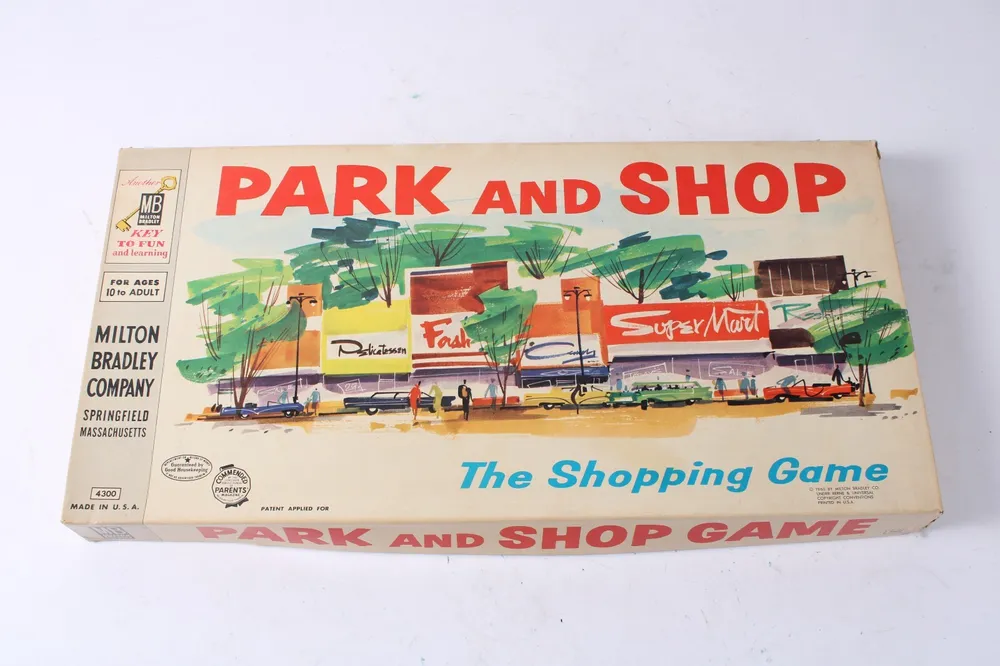Park and Shop (1950)
Park and Shop
Park and Shop is a board game that was invented in Allentown, Pennsylvania by Campe Euwer in the early 1950s. The game was created as a publicity stunt to promote the new “Park & Shop” concept, which was a system of free parking lots surrounding shopping areas. The game was designed with downtown Allentown in mind, and the board does not feature any named streets, but the shape of the route of the initial game is similar to the area in Allentown where the Park & Shop concept was located. The game was sold by the Milton-Bradley Company of Springfield, MA, and it has similarities to other popular board games like Monopoly, Life, or Risk.
Why is Park and Shop Popular?
Park and Shop became popular across the country after its release in 1952. The game’s popularity can be attributed to its unique concept of running errands for fun, which was a reflection of the post-World War II era’s focus on suburbanization and consumer culture. The game’s popularity continued into the 1960s, and it was updated with new graphics and stores in 1960. However, the game was discontinued in the 1970s, likely due to changing cultural attitudes towards consumerism and the rise of more complex board games.
Game Components of Park and Shop
How To Setup Park and Shop
To set up the game, players first place the game board in the middle of the playing area. Each player chooses a car and a pedestrian marker and places them at the “home” space on the board. The shopping cards, money, and other game components are distributed according to the rules. Players determine who goes first, usually by rolling the dice.
Gameplay Mechanics and Game Objective
Player Experience
Playing Park and Shop is a nostalgic trip back to the 1950s and 1960s, capturing the essence of suburban life and the routines of daily errands. The game is relatively simple and family-friendly, making it accessible to a wide range of ages. The mix of driving and walking phases adds a unique twist, and the various cards introduce elements of chance and strategy.
Pros
Cons
Personal Thoughts on Park and Shop
Park and Shop is ideal for those who enjoy retro games and are looking for a light, family-oriented experience. It is particularly appealing to collectors of vintage board games and those interested in the historical context of suburban development in the United States. While it may not offer the depth of modern board games, its simplicity and nostalgic charm make it a fun and educational addition to any game collection.
We are supported by our audience. When you purchase through links on our site, we may earn an affiliate commission, at no extra cost for you. Learn more.

